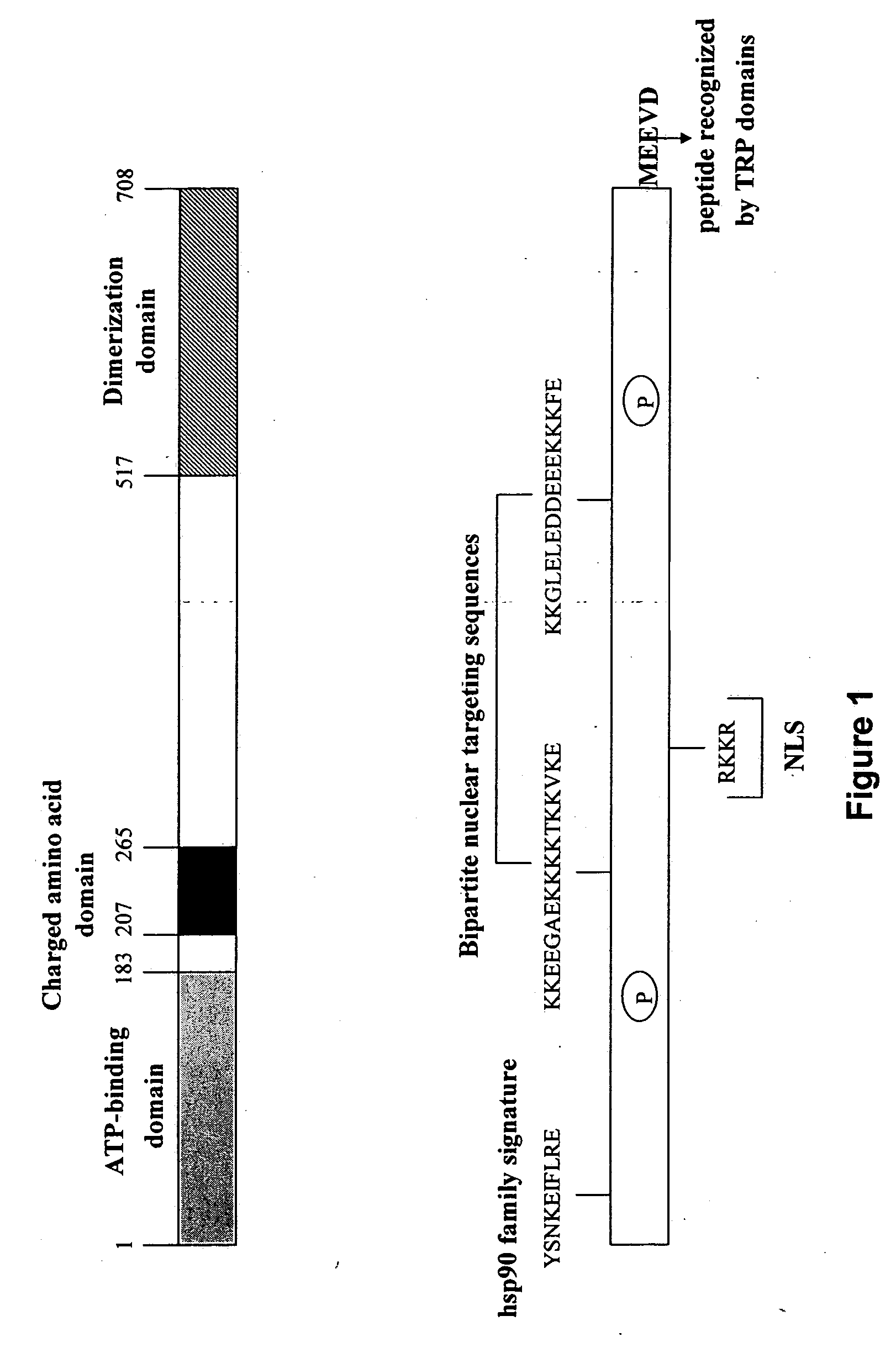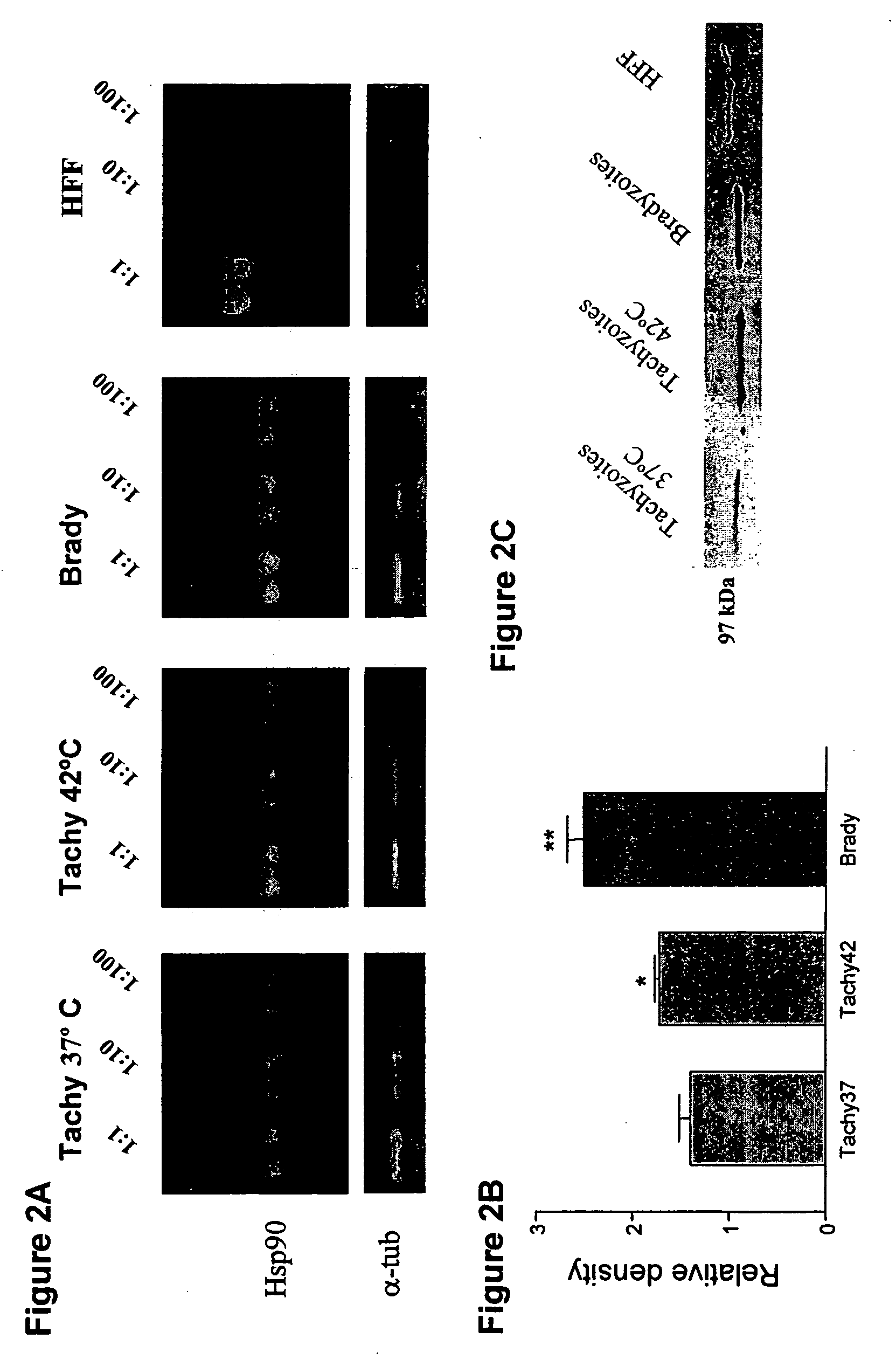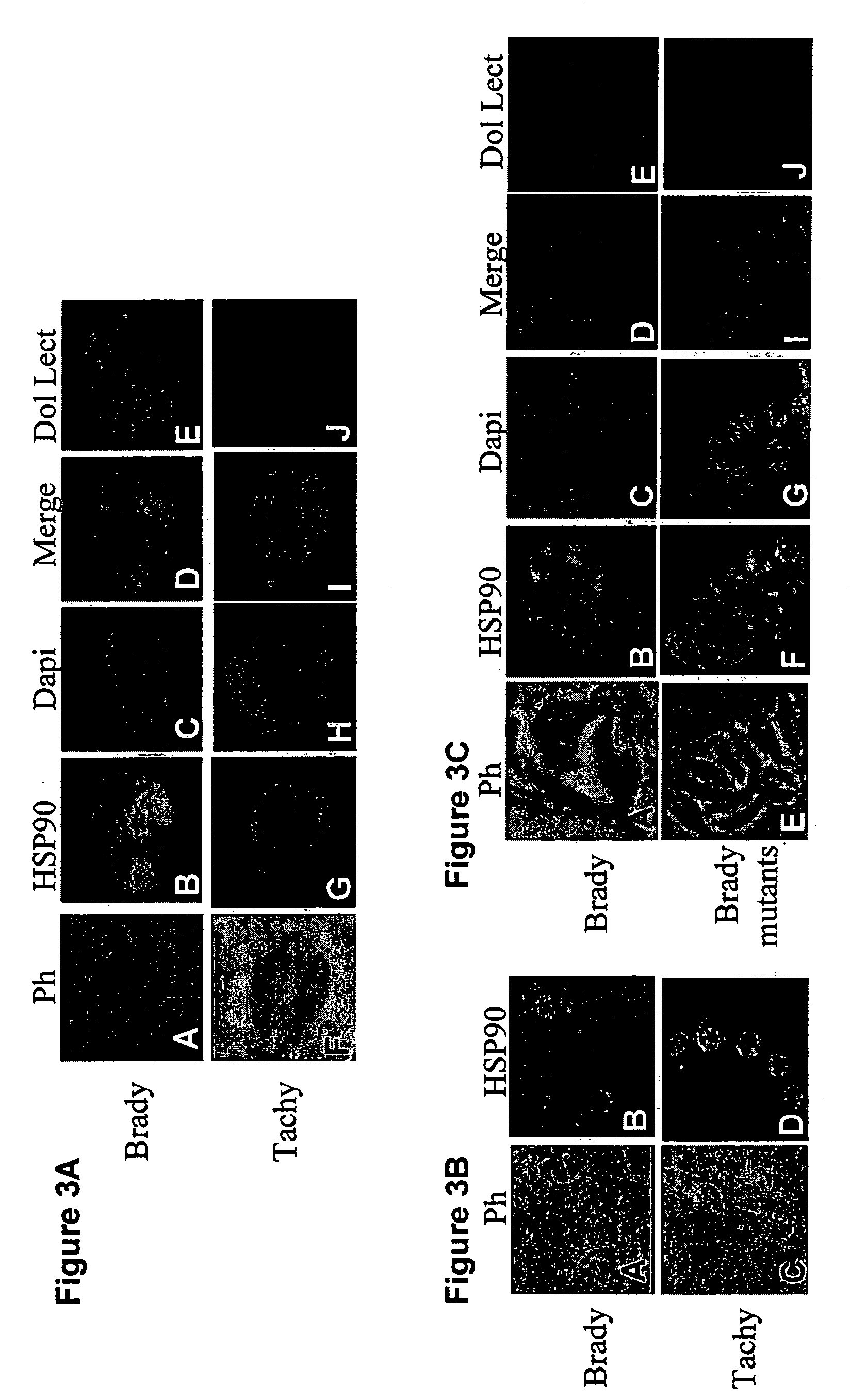Methods and compositions for treating Toxoplasma
a technology of toxoplasma and composition, applied in the field of latent toxoplasma gondii infection treatment, can solve the problems of life-threatening opportunistic disease and no effective treatment for chronic toxoplasmosis
- Summary
- Abstract
- Description
- Claims
- Application Information
AI Technical Summary
Benefits of technology
Problems solved by technology
Method used
Image
Examples
example 1
Protein Sequence Analysis of T. gondii Hsp90
[0139] One of the T. gondii ESTs showing high identity with Hsp90 sequences (TgESTzyd42c07.yl) was sequenced. The T. gondii Hsp90 is a 2933-bp cDNA encoding a predicted 708 amino acid protein with a theoretical mass of 81.9 kDa. The deduced amino acid sequence showed 100% identity with the Hsp90 previously described (Ahn et al., (2003) Biochem Biophys Res Commun 311, 654-659). Several structural motifs that are characteristic of Hsp90 proteins were also present in T. gondii Hsp90 (FIG. 1). These included the ATP-binding domain which is related to a superfamily of homodimeric ATPases comprising, in addition to Hsp90, DNA gyrase and Histidine kinase proteins. This highly conserved N-terminal domain is also the binding site for GA. PROSITE database analysis revealed that this protein contained several signature features of Hsp90 proteins including a conserved charged amino acid domain (glutamine / lysine rich), a tetratricopeptide repeat (TRP)...
example 2
Induction of Hsp90 Expression Under Heat Stress and Bradyzoite Differentiation Conditions
[0140] To analyze the Hsp90 expression during heat stress and tachyzoite-bradyzoite conversion, RH ΔUPRT strain parasites were grown under tachyzoite conditions, heat stress (1 hour, 42° C.), or bradyzoite differentiation conditions (CO2 starvation) (Bohne et al., (1997) Mol Biochem Parasitol 88, 115-126). The development of bradyzoites was monitored utilizing a D. biflorus lectin-based immunofluorescence assay (Boothroyd et al., (1997) Philos Trans R Soc Lond B Biol Sci 352, 1347-1354). The transcription profile was examined using semi-quantitative RT-PCR (FIG. 2A). To ensure that equal amounts of cDNA from each parasitic stage were being compared, mRNA from the housekeeping gene α-tubulin was also assayed in parallel. A 24% induction of Hsp90 expression was observed in stressed tachyzoites compared to unstressed parasites (FIG. 2A and FIG. 2B). Under bradyzoite conditions, however, an 80% inc...
example 3
Stage-Specific Subcellular Localization of Hsp90
[0142] In order to determine the subcellular localization of Hsp90 during bradyzoite formation, immunofluorescence assays (IFA) were carried out under tachyzoite conditions or parasites cultivated for 4 days under bradyzoite differentiation conditions, with an antibody toward the T. gondii Hsp90 (green pseudocolor in FIG. 3A). The Hsp90 was present in the cytosol and excluded from the nucleus in tachyzoites (FIG. 3A, panels G and I). In contrast, bradyzoites exhibited a dramatic change in Hsp90 localization, showing a cytoplasmic and nuclear staining pattern (FIG. 3A, panels B and D). These results were confirmed by confocal microscopy: the Hsp90 was excluded from the nucleus in all tachyzoite sections (FIG. 3B, one section shown) and present in the nucleus and cytosol of all bradyzoite sections (FIG. 3B, one section shown).
[0143] To examine whether the change in the subcellular localization is a general response to stress or CO2 sta...
PUM
| Property | Measurement | Unit |
|---|---|---|
| Heat | aaaaa | aaaaa |
Abstract
Description
Claims
Application Information
 Login to View More
Login to View More - R&D
- Intellectual Property
- Life Sciences
- Materials
- Tech Scout
- Unparalleled Data Quality
- Higher Quality Content
- 60% Fewer Hallucinations
Browse by: Latest US Patents, China's latest patents, Technical Efficacy Thesaurus, Application Domain, Technology Topic, Popular Technical Reports.
© 2025 PatSnap. All rights reserved.Legal|Privacy policy|Modern Slavery Act Transparency Statement|Sitemap|About US| Contact US: help@patsnap.com



